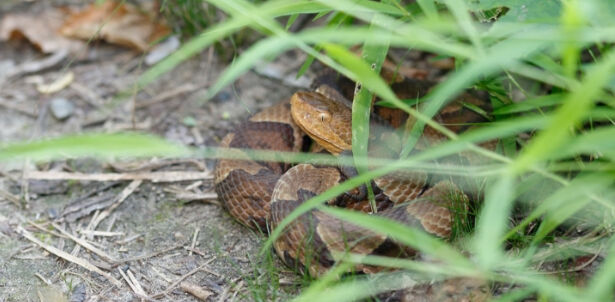How to Keep Snakes Out Humanely and Effectively
By Lee Wallender, The Spruce
Snakes prey on rodents and insects and are a vital part of the ecosystem. But for many homeowners, snakes are not welcome in the yard. Some snakes will bite, and bites can be harmful. So, it’s understandable to want to know how to keep snakes out of your yard.
The best way to keep snakes out of your yard is to use a combination of techniques, from making the yard unfriendly to snakes to erecting snake-proof fencing and sealing up the house.
Maintain a Dry Yard
Keep excess water out of your yard. Avoid building garden ponds, look into yard drainage methods to drain standing water, and move drained gutter water beyond the home.3
Snakes are attracted to water, and like all animals, they need water to survive. Also, excess water makes grass and foliage grow, and high grass and overgrown foliage attract and harbor snakes.
Trim Grass and Foliage
Mow frequently to keep the lawn low, trim bushes back from the house, and cut the branches of low-hanging trees. Snakes depend on high grass and bushy foliage for hiding. They are less apt to go to an exposed area, and overgrown areas also prevent them from being seen.
Remove Food From the Yard
Keep all types of food out of the yard. Feed pets indoors, remove birdseed, and avoid feeding squirrels. Snakes may be attracted to any type of food left in the yard.
Remove Burrowing Areas
Move stacked firewood far away from the house. Remove piles of stones. For large joints between masonry structures, fill the gaps with mortar.
Snakes are attracted to small, shaded areas, Moving or breaking up areas where they can burrow forces them to seek other areas—farther away from your house.
Avoid Landscaping With Large Rocks
Move large landscaping stones away from the house or avoid using them for landscaping in the first place.
Flagstones make beautiful walkways and patios in a yard, but snakes love to lounge on them when warmed by the sun. Large boulders are another type of landscaping rock that attracts snakes.
Avoid Using Mulch
Remove mulch used as landscaping and leave the area open or replace it with lava rock. Bark-type mulch used for landscaping provides a damp, welcoming environment for snakes.
Seal Foundation Cracks
Search for cracks in the house’s foundation and along the rim joist. Fill the cracks with concrete crack filler.
Tip
The best concrete crack filler will be a hydraulic cement compound that resists water as well as excludes snakes.
Erect Snake-Proof Fencing
Create an exclusionary boundary around the property to prevent snakes from entering. Use quarter-inch square metal hardware cloth (wire), 48 inches high and staked every six feet. Tilt the wire 30 degrees toward the exterior. Be sure to overlap the cloth by several inches when seaming it.
Create a boundary around your house filled with lava rocks. While not a total barrier to snakes, some evidence suggests snakes tend to avoid sharp rocks
Commonly used for stone fire pits, lava rocks are also a xeriscaping idea for gardening in drier climates.
Add Sticky Traps Inside
Place sticky glue traps along walls or in corners as the last line of defense for snakes entering the home. Snakes become entangled in the traps, hampering movement.
How to Get Rid of Snakes in Your Yard
It’s tougher to eliminate snakes from the yard than to exclude them in the first place. But there are a few methods of capturing and removing snakes in your yard or home.
Place a heating pad in a bucket and turn it on. Check the bucket frequently. Spray the snake directly with a natural solution of one-percent cinnamon oil, clove oil, or eugenol and one-percent sodium lauryl sulfate (a soap-type material), in a solution of 98-percent water.
Any snakes out in the open can be swept into a high-sided garbage container and released in the wild.
Call your local animal control service to remove the snake.

